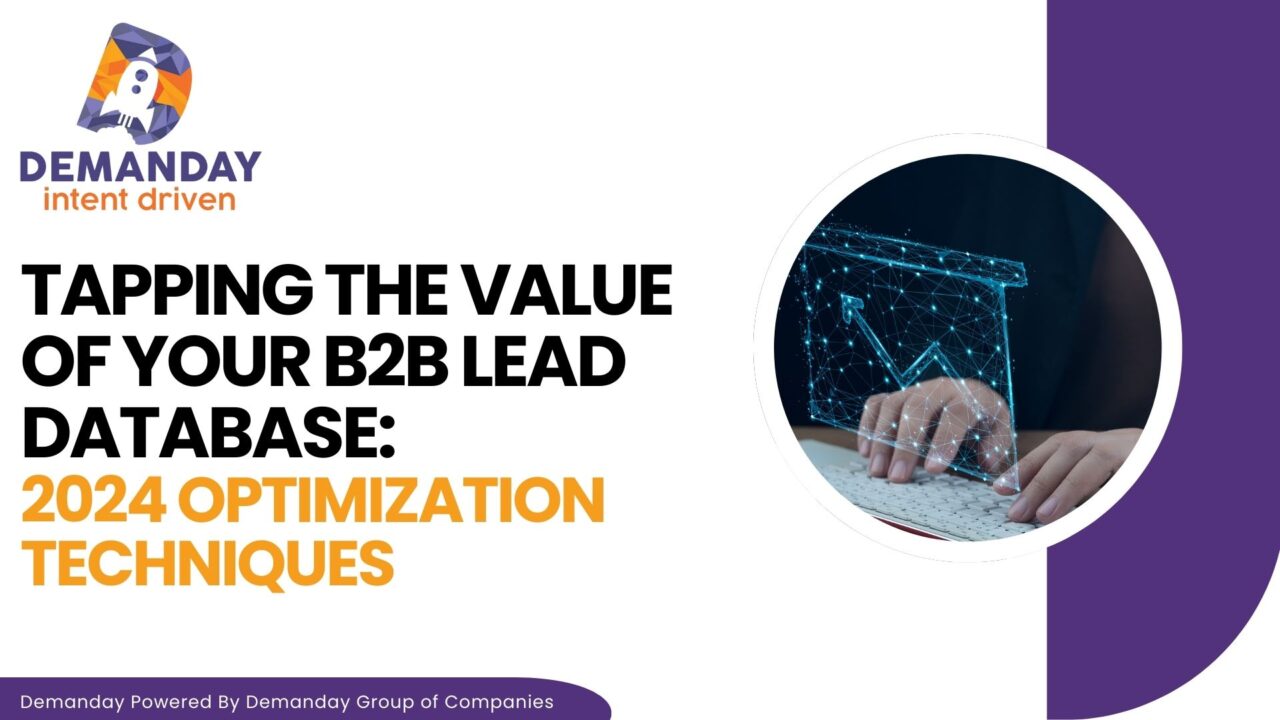Tapping the Value of Your B2B Lead Database: 2024 Optimization Techniques
Your B2B lead database is a goldmine of potential customers. But without proper optimization, it’s like having a buried treasure without a map. It’s time to unlock the full potential of your lead database and turn those contacts into loyal customers.
Why B2B Lead Database Optimization Matters
Your B2B lead database is a treasure trove of potential customers, but like any valuable resource, it requires regular maintenance. Data cleansing, often called data scrubbing, is detecting and correcting or removing inaccurate, incomplete, incorrectly formatted, duplicated, or otherwise erroneous data. It’s the digital equivalent of spring cleaning for your business.
Data Cleansing: Spring Cleaning for Your Lead Database
You should regularly spring clean your lead database, just like you would your physical area. Outdated and accurate information can help your marketing efforts. Here’s how to breathe new life into your database:
- Remove duplicates: Identify and remove duplicate leads to streamline your database and improve data accuracy.
- Update contact information: Ensure all contact details (emails, phone numbers, addresses) are correct and up-to-date.
- Verify company information: Confirm the existence and status of companies in your database.
- Segment your leads: Categorize leads based on industry, company size, job title, or other relevant criteria.
Enriching Your Lead Profiles:
A robust lead profile provides valuable insights into your potential customers. Here’s how to add to your database of leads:
- Leverage social media: Gather information about your leads’ interests, preferences, and online behavior from their social media profiles.
- Use firmographic data: Add company details to your lead profiles, such as size, revenue, location, and industry.
- Track website interactions: Monitor visitors and record their behavior to understand their interests and needs.
Lead Scoring: Prioritize Your Focus
Not all leads are created equal. Implementing a lead scoring system helps you prioritize your efforts and focus on the most promising opportunities. Here’s how to do it:
- Define lead scoring criteria: Identify factors that indicate a lead’s potential value, such as job title, company size, website engagement, and purchase history.
- Assign point values to each criterion: Determine the weight of each factor based on its importance to your business.
- Set lead scoring thresholds: Establish clear benchmarks for qualifying leads and passing them to your sales team.
Leverage Automation for Efficiency
Automation can significantly boost your lead database management efficiency. Consider using tools to:
- Automatically capture leads: Integrate your website forms with your CRM to capture leads efficiently.
- Update lead information: Use automation to update lead profiles with new information from various sources.
- Trigger automated workflows: Set up automated email campaigns or lead scoring adjustments based on lead behavior.
Continuous Optimization and Analysis
Your lead database is a living entity. It requires constant monitoring and optimization. Here’s how to ensure its effectiveness:
- Frequent data cleansing: To ensure accuracy, plan frequent data cleaning operations.
- Track lead quality: To evaluate the caliber of your leads, keep an eye on important indicators such as conversion rates, lead-to-customer ratios, and customer lifetime value.
- A/B test lead nurturing campaigns: Experiment with different email content and messaging to identify what resonates best with your audience.
Following these strategies will transform your B2B lead database into a powerful asset that drives sales and fuels your business growth.



